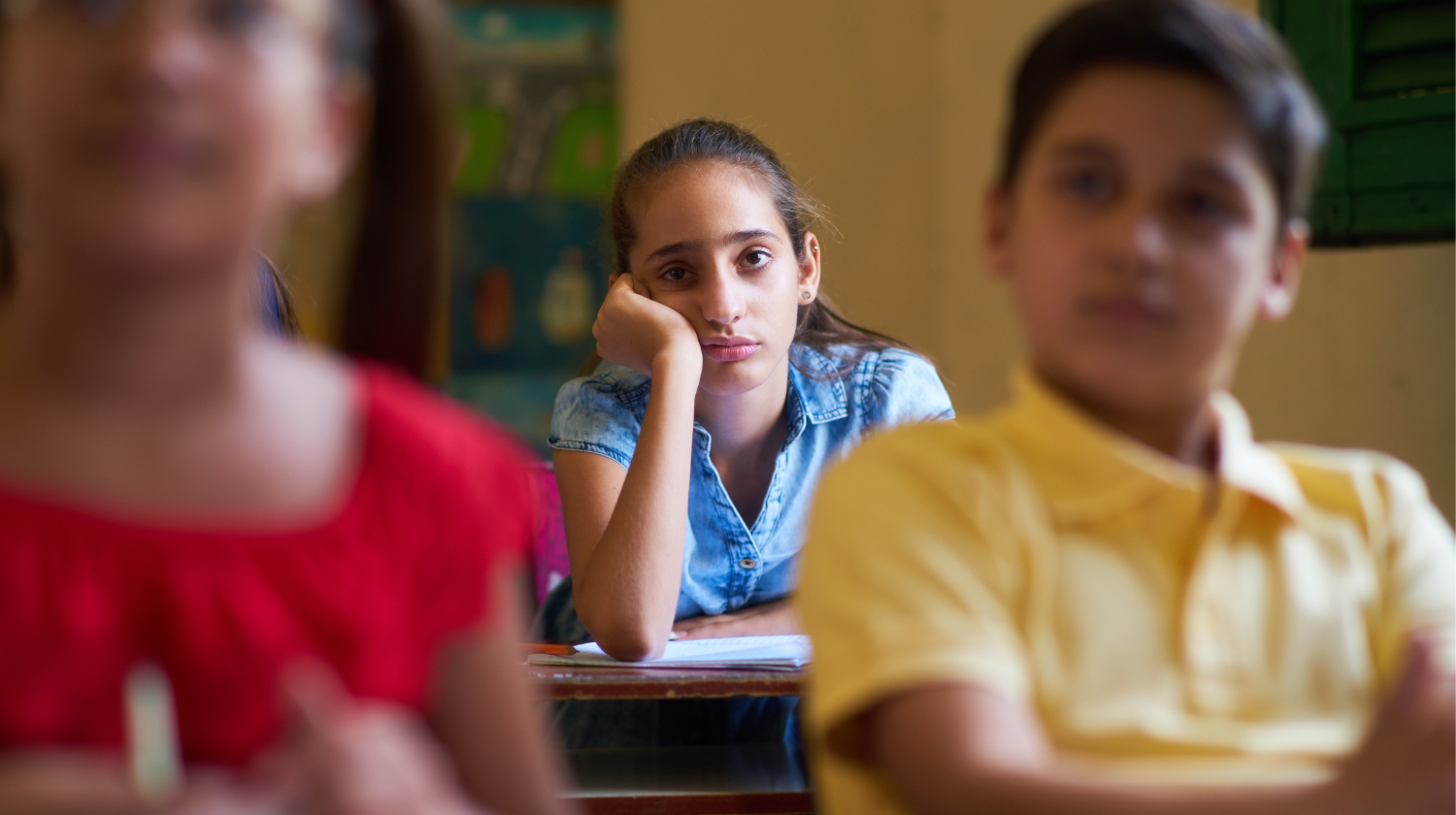How To Help A Child With Separation Anxiety At School 2024

Every parent knows how dealing with tears at the school gates feels. Suddenly, your happy toddler is clinging to your leg, crying. You wonder, for the hundredth time, if this will ever get easier! Rest assured that we’ve all been there as parents. But chances are, they’ll be having too much fun to leave daycare or school in time to go home!
However, what if those tears never really stop? We’ll be sharing some great coping tips to make drop-offs easier. We’ll explain how separation anxiety in adults and kids can be treated. We’ll also explore common symptoms. Finally, find out when you should see a doctor. So let’s get straight to it! What are the best ways to help younger children with separation anxiety at school?
Tips To Help A Child Overcome Separation Anxiety At School
In this article, you’ll learn tips for helping younger children overcome separation anxiety. These include how to
- Plan ahead.
- Use visualization.
- Take small steps.
- Share feelings.
- Leave reminders that comfort them.
- Encourage new friendships.
- Don’t give in to anxiety.
- Work with the school.
- Check your own anxiety levels.
- Use exercise, nature, and healthy behavior modeling.
What Is Separation Anxiety In Children?
Feeling anxious at the school gates is normal for children and toddlers. It represents the first step to independence when entering daycare or kindergarten.
However, for some kids, fear and worry can persist. In these cases, it may be separation anxiety. Separation anxiety is a recognized anxiety disorder[1] that seriously impacts day-to-day life. It is a far more distressing, fearful, and extreme state than just feeling nervous. It reduces the quality of life for a child and often persists[2] into adulthood. It can cause school refusal, absence, and difficulty in interacting with peers and classmates. In fact, it regularly negatively impacts[3] family life, leisure time, social interactions, and educational outcomes.
Anxiety in children is surprisingly common.[4] Around 10% of children are thought to experience it by the age of 16. The average age of onset is around 11 years of age. Over the lifespan, this figure rises to around 29%. Genetic and environmental[4] factors can both contribute to it.
So how can you tell whether your child is just nervous or if it’s a child’s separation anxiety? Let’s check out some of the symptoms.
Symptoms Of Separation Anxiety Disorder In Children
First, here are some common physical symptoms of anxiety. They include:
- A rapid heartbeat or shortness of breath. This can make a child feel panicked and worsen their distress.
- Nausea and tummy aches. Often children present with both in the mornings, and before school. Both are ways the body can process a child’s fears.
- Insomnia, nightmares, and disturbed sleep.[5] This can make it tough for children to fall asleep at bedtime. Don’t punish them, as they aren’t being deliberately naughty. Find ways to relax, like deep breathing, stories, and talking. That way, sleep becomes an easier affair.
- Frequent headaches and muscle tension are common symptoms of a child’s anxiety.
- Many children experience general somatic[6] disorders. Somatic disorders tend to predict emotional disorders in adulthood.
There are common emotional symptoms to look out for in younger and older children, too. These include:
- A persistent, excessive state of fear[7] and anxiety at home or at school.
- General distressed state, feeling sad or depressed. Intense or prolonged fixation on what is making them afraid and scared.
- Tantrums, anger, frustration, and meltdowns[8] at school drop-off or at home. This can manifest as avoiding school.
What can you do if you recognize any of these symptoms or behaviors in your children? Here are some great tips that can help.
Tips To Help Kids With Separation Anxiety At School
Here are some tips and strategies that can help you and your child with separation anxieties. We explain the benefits of planning ahead, using visualization, and taking small steps. We also look at sharing their feelings and leaving reminders to comfort them. The power of new friendships and not giving in to anxiety comes next. Finally, working with the school, exercise, nature, and health are covered!
Plan Ahead
Parents should plan ahead with their kids. When you prepare a set daily routine, they will feel less overwhelmed. That’s often because uncertainty[9] raises stress hormones. Your child will feel more in control with a familiar routine and structure.[8]
Use Visualization
For older children, use visualization to process their anticipated worries positively. This helps their brain practice future events and manage stressors. This takes away negative feelings of uncertainty and anticipation.[10]
Take Small Steps
Use small steps. Start with short periods of separation from a primary caregiver. Slowly build up exposure. This will help your child to become more confident at kindergarten or school. Parents and caregivers can use positive distractions and positive reinforcement[11] for every small step accomplished. This is an important way that you can be supportive.
Share Their Feelings
Encourage them to share their feelings. Explain that you will always be there for them. Modeling positive behavioral responses,[12] such as empathy, is a positive way to help be a role model. Anticipate anxious feelings or crying. Stay calm and reassure your preschooler when it happens. Hug them, and acknowledge their worries. Then remind them they will be safe and secure during their school day.
Leave Reminders That Comfort Them
For younger children and toddlers, leave a fun note in their lunchbox! It will add a little extra comfort[13] to their day. It’s a great little trip to help a child with separation anxiety.
Encourage New Friendships
Find a new friend and organize a playdate! Get your child excited about meeting new classmates. Making new friends creates school-time fun!
Don’t Give In To Anxiety
If parents accommodate anxiety in the short term, it can worsen the problem.[14] Instead, don’t give in. Always stay calm at the school gates, and choose a fun goodbye ritual. Stick to it!
Work With The School
School staff will have seen fear and anxiety in children many times before. It’s definitely a great idea to reach out to your child’s new teacher. They will know how to manage meltdowns and encourage your little one back to school.
Check Your Own Anxiety Levels
Also bear in mind that maternal anxiety can influence children’s anxiety levels. A longitudinal 2013 study[15] predicted social issues for children with distressed mothers. If parents are overprotective or controlling, this increases child anxiety further.
Exercise, Nature, And Health
Find new healthy pursuits as a family. The more your child spends time in nature,[16] the less anxious they will be. Exercise[16] has the same positive effect. You can also think about encouraging optimal nutrition to help their anxiety levels.
When To Seek Professional Help
If you notice signs of severe worry, anxiety, or fears, contact a professional for advice. It makes no sense to navigate the issue alone. Your doctor can diagnose separation anxiety disorder and suggest treatment plans.
Cognitive behavioral therapy can be an effective treatment[17] for both parents and children. Your doctor may also advise the use of medication[18] for you or your child to get them back to school.
If you feel excess fear, worry, or distress as a parent, you may have adult separation anxiety disorder, or ASAD.[19] A recent American Journal of Psychiatry study explains how ASAD can lead to[7] lower anxiety and mood regulation tolerance. It can also cause excessive fear and distress.
We also know that childhood anxiety is a predictor of adult anxiety disorders.[20] Seeking help now can carry lifelong benefits. Can’t get to a doctor or child psychologist in person? There are some great online therapy options out there.
The Takeaway
For most children and toddlers, a little separation anxiety is a healthy and normal[7] stage. But if it persists beyond the early years, it may be time to seek help. It can impair[20] healthy educational, social, and emotional outcomes, even into adulthood. Professional help should be sought before problems reach adulthood to provide children with additional support to feel secure with their classroom and teachers.
The bottom line is that we all feel nervous sometimes. Every child has days when they feel like avoiding school or feel worried about a test. But when a bad morning turns into fear, anxiety, and ongoing distress, it’s time to take the next step. Never feel bad about reaching out for help.
School can be a wonderful place for kids when they feel confident. And with the right treatment and support, even the most anxious child can feel that happiness, too.
+ 20 sources
Health Canal avoids using tertiary references. We have strict sourcing guidelines and rely on peer-reviewed studies, academic researches from medical associations and institutions. To ensure the accuracy of articles in Health Canal, you can read more about the editorial process here
- Paulus, F.W., Backes, A., Sander, C.S., Monika Waldis Weber and Alexander von Gontard (2015). Anxiety Disorders and Behavioral Inhibition in Preschool Children: A Population-Based Study. [online] 46(1), pp.150–157. doi:https://doi.org/10.1007/s10578-014-0460-8.
- American Journal of Psychiatry. (2020). The Separation Anxiety Hypothesis of Panic Disorder Revisited: A Meta-Analysis. [online] Available at: https://ajp.psychiatryonline.org/doi/full/10.1176/appi.ajp.2012.12070893
- Creswell, C., Waite, P. and Cooper, P.J. (2014). Assessment and management of anxiety disorders in children and adolescents. [online] 99(7), pp.674–678. doi:https://doi.org/10.1136/archdischild-2013-303768.
- Waszczuk, M.A., Helena and Eley, T.C. (2013). Genetic and environmental influences on relationship between anxiety sensitivity and anxiety subscales in children. [online] 27(5), pp.475–484. doi:https://doi.org/10.1016/j.janxdis.2013.05.008.
- Dialogues in Clinical Neuroscience. (2022). Sleep and anxiety disorders. [online] Available at: https://www.tandfonline.com/doi/full/10.31887/DCNS.2003.5.3/lstaner
- Shanahan, L., Zucker, N., Copeland, W.E., Bondy, C.L., Egger, H.L. and E. Jane Costello (2015). Childhood somatic complaints predict generalized anxiety and depressive disorders during young adulthood in a community sample. [online] 45(8), pp.1721–1730. doi:https://doi.org/10.1017/s0033291714002840.
- American Journal of Psychiatry. (2013). Childhood Separation Anxiety and the Pathogenesis and Treatment of Adult Anxiety. [online] Available at: https://ajp.psychiatryonline.org/doi/full/10.1176/appi.ajp.2013.13060781
- Jstor.org. (2020). Supporting Anxious Children in the Preschool Classroom on JSTOR. [online] Available at: https://www.jstor.org/stable/26979161
- Peters, A., McEwen, B.S. and Friston, K.J. (2017). Uncertainty and stress: Why it causes diseases and how it is mastered by the brain. [online] 156, pp.164–188. doi:https://doi.org/10.1016/j.pneurobio.2017.05.004.
- Grupe, D.W. and Nitschke, J.B. (2013). Uncertainty and anticipation in anxiety: an integrated neurobiological and psychological perspective. [online] 14(7), pp.488–501. doi:https://doi.org/10.1038/nrn3524.
- Journal of Clinical Child & Adolescent Psychology. (2017). Evidence Base Update for Psychosocial Treatments for Disruptive Behaviors in Children. [online] Available at: https://www.tandfonline.com/doi/full/10.1080/15374416.2017.1310044
- Elle Mae Boag and Carnelley, K.B. (2016). Attachment and prejudice: The mediating role of empathy. [online] 55(2), pp.337–356. doi:https://doi.org/10.1111/bjso.12132.
- Gross, J.T., Stern, J., Brett, B.E. and Cassidy, J. (2017). The multifaceted nature of prosocial behavior in children: Links with attachment theory and research. [online] 26(4), pp.661–678. doi:https://doi.org/10.1111/sode.12242.
- Thompson-Hollands, J., Kerns, C.E., Pincus, D.B. and Comer, J.S. (2014). Parental accommodation of child anxiety and related symptoms: Range, impact, and correlates. [online] 28(8), pp.765–773. doi:https://doi.org/10.1016/j.janxdis.2014.09.007.
- Dubois-Comtois, K., Moss, E., Cyr, C. and Pascuzzo, K. (2013). Behavior Problems in Middle Childhood: The Predictive Role of Maternal Distress, Child Attachment, and Mother-Child Interactions. [online] 41(8), pp.1311–1324. doi:https://doi.org/10.1007/s10802-013-9764-6.
- Lawton, E., Brymer, E., Clough, P.J. and Denovan, A. (2017). The Relationship between the Physical Activity Environment, Nature Relatedness, Anxiety, and the Psychological Well-being Benefits of Regular Exercisers. [online] 8. doi:https://doi.org/10.3389/fpsyg.2017.01058.
- Thirlwall, K., Cooper, P.J., Karalus, J., Merryn Voysey, Willetts, L. and Creswell, C. (2013). Treatment of child anxiety disorders via guided parent-delivered cognitive–behavioural therapy: Randomised controlled trial. [online] 203(6), pp.436–444. doi:https://doi.org/10.1192/bjp.bp.113.126698.
- American Journal of Psychiatry. (2014). Treatment of Separation, Generalized, and Social Anxiety Disorders in Youths. [online] Available at: https://ajp.psychiatryonline.org/doi/full/10.1176/appi.ajp.2014.13101337
- Proquest.com. (2022). Adult Separation Anxiety Disorder: A Review – ProQuest. [online] Available at: https://www.proquest.com/openview/4327383233fe5998ba00a48df21aeea2/1?pq-origsite=gscholar&cbl=166138
- American Journal of Psychiatry. (2020). The Separation Anxiety Hypothesis of Panic Disorder Revisited: A Meta-Analysis. [online] Available at: https://ajp.psychiatryonline.org/doi/full/10.1176/appi.ajp.2012.1207089



